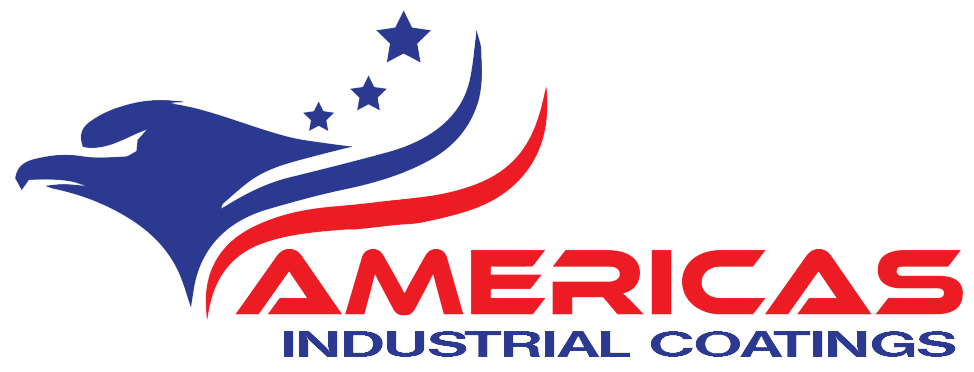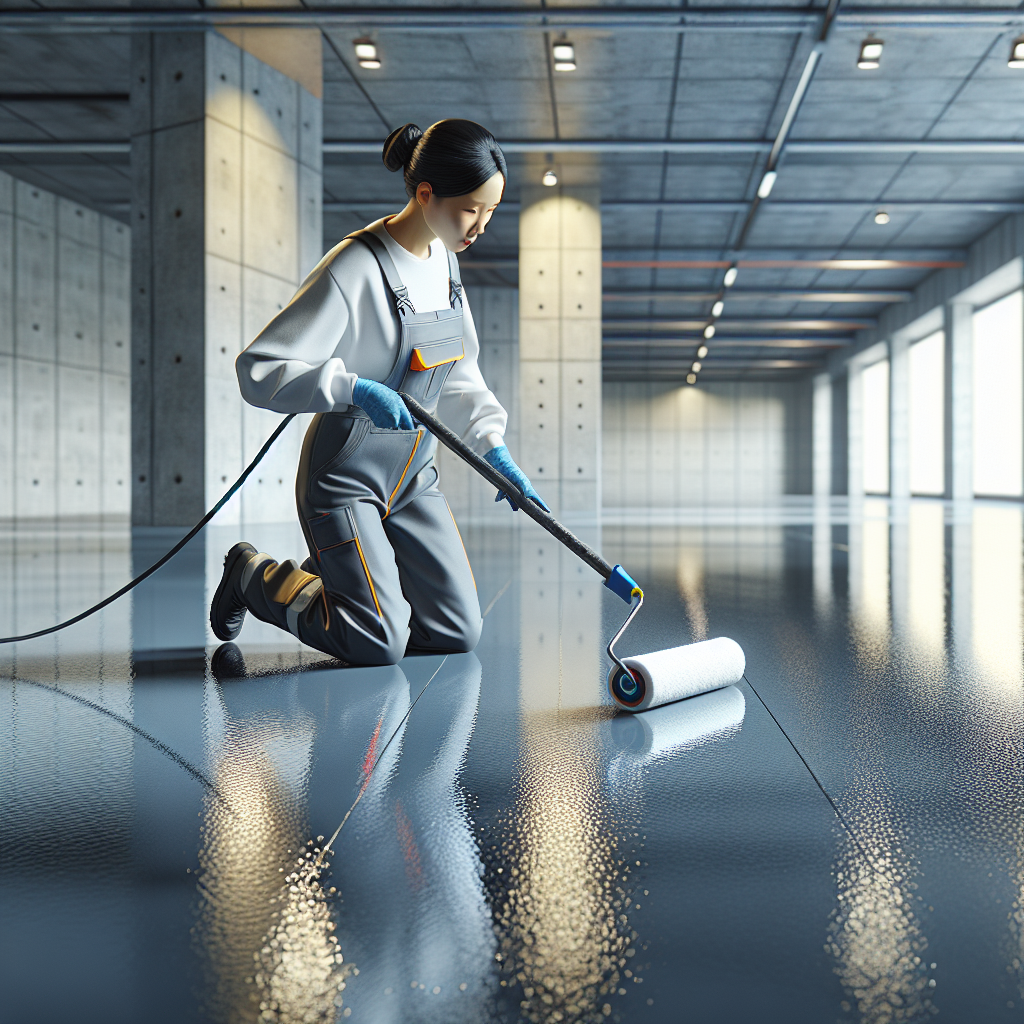When considering a new flooring solution for your space, whether residential or commercial, epoxy flooring stands out as a popular choice. Renowned for its durability, aesthetic appeal, and resilience, epoxy flooring is a cost-effective option that enhances both the functionality and appearance of your floors. However, many potential users are often left wondering, “how hard is epoxy flooring to install?”
The process of installing epoxy flooring involves a series of precise steps, and while not impossible for a DIY enthusiast, it does require meticulous preparation and execution to ensure a flawless finish. From understanding the nuances of surface preparation to selecting the right type of epoxy, each phase of the installation is crucial.
At Americas Industrial Coatings in Fort Lauderdale, we specialize in delivering expert epoxy floor installation services across Broward County, Florida. Our team of professionals brings years of experience and technical expertise to every project, ensuring a seamless and efficient installation process.
Call Us Today for a Free Quote and discover how we can transform your space with top-tier epoxy flooring solutions.
Understanding Epoxy Flooring Challenges
While epoxy flooring offers numerous benefits, it is essential to acknowledge the challenges associated with its installation. One of the primary difficulties lies in the meticulous preparation of the substrate. The surface must be thoroughly cleaned and free of any contaminants such as grease, oil, or dust, which can interfere with the epoxy’s ability to bond effectively.
Another significant challenge is related to the precise mixing and application of the epoxy resin and hardener. Achieving the correct ratio is crucial, as this determines the curing time and the durability of the finished floor. Any deviation can lead to issues like improper curing, bubbling, or peeling over time.
Environmental conditions also play a pivotal role in the installation process. Ideal temperature and humidity levels must be maintained to ensure the epoxy sets correctly. Excessive moisture or fluctuating temperatures can adversely affect the curing process, leading to an uneven or compromised finish.
Additionally, working with epoxy requires protective gear due to the presence of volatile organic compounds (VOCs) during application. This highlights the importance of safety measures to prevent inhalation of fumes and skin contact.
Understanding these challenges is vital for anyone considering epoxy flooring, whether they plan to tackle the installation themselves or hire professionals. Being informed enables better decision-making and helps in achieving the desired outcome with minimal setbacks.
Essential Tools for Epoxy Flooring

Embarking on an epoxy flooring project requires a well-equipped toolkit to ensure a smooth installation process. The array of essential tools not only simplifies the task but also enhances the quality of the finished floor. At the core of this setup are the mixing tools such as a drill with a paddle attachment, which is crucial for blending the epoxy resin and hardener to the correct consistency.
Another indispensable item is the notched squeegee. This tool aids in spreading the epoxy evenly across the floor, ensuring a uniform layer without air pockets. For the edges and corners where the squeegee might not reach, a paintbrush or small roller comes in handy.
To achieve a smooth finish, a spiked roller is used to remove bubbles that may form during the application process. The roller’s spikes puncture the bubbles, allowing the epoxy to settle flat. This is especially important for maintaining the aesthetic appeal and structural integrity of the flooring.
Personal protective equipment (PPE) is also crucial. Safety goggles, gloves, and a respirator are necessary to protect against the fumes and chemicals present in epoxy. Additionally, wearing spiked shoes allows the installer to walk on the wet epoxy without leaving footprints, enabling them to work on the floor continuously.
Finally, a moisture meter is an invaluable tool for assessing the dryness of the concrete substrate before application. This ensures the surface is primed for the epoxy, reducing the risk of adhesion problems.
Step-by-Step Epoxy Flooring Process

Installing epoxy flooring involves a series of meticulous steps that ensure durability and a visually appealing finish. The process begins with thorough surface preparation. This involves cleaning the concrete floor to remove dust, grease, and any existing coatings. Any cracks or holes should be patched to ensure a smooth surface.
Once the floor is prepped, a primer coat is applied. The primer acts as a bonding agent between the concrete and the epoxy, enhancing the adhesion and longevity of the floor. After the primer is dry, typically within 6-8 hours, it’s time to mix the epoxy resin and hardener. This step requires precision, as the ratio of resin to hardener determines the curing process and final strength of the flooring.
With the mixture ready, the epoxy is poured onto the floor in sections and spread using a squeegee. It’s crucial to work swiftly yet carefully to maintain a consistent layer. To eliminate any air bubbles, a spiked roller is used immediately after spreading. This ensures a smooth, bubble-free finish.
Depending on the desired aesthetic, colored flakes or quartz can be sprinkled onto the wet epoxy. This not only adds texture but also enhances the floor’s durability. Once the base coat is cured, which usually takes 12-24 hours, a topcoat is applied. The topcoat provides additional protection against UV rays, chemicals, and abrasions.
Finally, it’s essential to allow the floor to cure completely before use. This could take between 72 hours to seven days, depending on the specific epoxy product used. Each step in this process is vital to achieving a professional and resilient epoxy floor finish.
Common Mistakes in Epoxy Installation

Even though epoxy flooring can transform spaces with its sleek and durable finish, there are common mistakes that can undermine the quality and longevity of the installation. One of the most frequent errors is inadequate surface preparation. Epoxy will not adhere properly to a dirty, oily, or damp surface. It’s crucial to ensure the floor is thoroughly cleaned and any moisture issues are resolved prior to application.
Another common pitfall is incorrect mixing ratios. Epoxy consists of a resin component and a hardener, and an incorrect ratio between these can lead to a weak or tacky finish. It’s vital to follow the manufacturer’s instructions precisely to ensure the epoxy cures correctly.
Timing is another critical factor. Applying epoxy outside of the recommended temperature range can result in improper curing. If the environment is too cold, the epoxy may not set, while excessive heat can cause the epoxy to cure too quickly, affecting its strength and appearance.
Using the wrong tools or techniques for application is also a common mistake. For instance, failing to use a spiked roller to remove air bubbles will likely result in a less-than-smooth finish. Furthermore, applying the epoxy too thinly can lead to a floor that lacks the durability and protective qualities epoxy is known for.
Finally, rushing the curing process can compromise the floor’s integrity. Allowing appropriate curing time, as specified by the epoxy manufacturer, is essential to ensure the floor achieves its full strength and durability. Avoiding these mistakes is crucial for a successful epoxy flooring installation.
Advantages of Professional Epoxy Installation

Opting for a professional epoxy installation offers numerous advantages that can significantly enhance the quality and longevity of your flooring. One of the primary benefits is the expertise and experience professionals bring to the table. They possess the knowledge to handle complex preparation and installation processes, ensuring the epoxy adheres correctly and cures to its full potential.
Professionals also have access to specialized tools and equipment that contribute to a seamless finish. From industrial-grade mixers that ensure the perfect blend of resin and hardener to high-quality rollers and brushes that deliver an even coat, these tools are crucial for a successful installation. Moreover, experienced installers are skilled at handling unexpected challenges, such as uneven substrates or moisture issues, which can be daunting for a DIY enthusiast.
Furthermore, professional installation often comes with a warranty, providing peace of mind that your investment is protected. Should any issues arise, you have the assurance of support and potential remedies. This assurance can be particularly valuable given the complexities involved in epoxy flooring.
Finally, hiring a professional can save time and effort. The installation process is streamlined and efficient, minimizing downtime and disruption. Professionals can complete the job swiftly and to a high standard, allowing you to enjoy your new flooring much sooner.
For those located in Broward County, Florida, and surrounding areas, Americas Industrial Coatings offers expert epoxy floor installation services. Call Us Today for a Free Quote and experience the benefits of a professional touch for your epoxy flooring needs.


